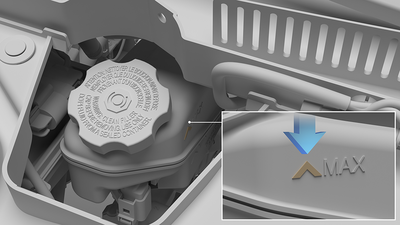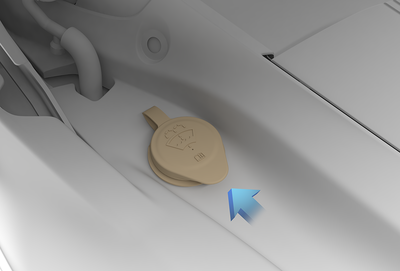Checking Brake Fluid
If the fluid in the brake reservoir drops below the recommended level, the brake warning icon will be displayed on the Clearview Cockpit. This will be accompanied by a notification message.
Low Brake Fluid Warning Indicator
Checking the Fluid Level
Check the brake fluid level with the vehicle on level ground.
- Remove the Rear underhood apron.
- Remove the brake reservoir cap.Note: Contact your Lucid Service Center if you need assistance with the above steps.
- Check the fluid level visually by looking at the
outside marks on the side of the reservoir without removing the filler cap.

The brake fluid level should always be at or below the MAX mark.
Note: Although the brake fluid level slightly drops during normal use as a result of brake lining wear, it should not drop to the point of activating the low brake fluid notification. Rapid fluid loss or triggering of the low brake fluid notification may indicate a leak in the system.
Topping Off Brake Fluid
To top off the fluid:
- Clean the filler cap before removing it to prevent dirt from entering the reservoir.
- Unscrew the cap and remove.
- Fill the reservoir to the MAX mark using a clean funnel and brake fluid meeting specification DOT4.
- Install the reservoir cap.
Replacing Brake Fluid
The brake fluid should be replaced every 2 years or every 24,000 miles, whichever comes sooner.
